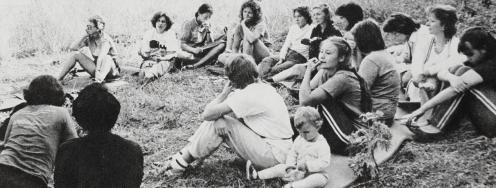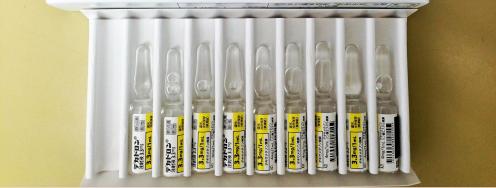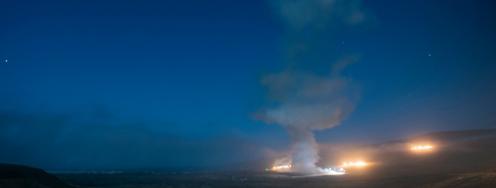NNSA Determined To Build Uranium Plant, Despite $4-$19 Billion Cost
On the radar: Confidence in the program, no confidence in cost; Unsecured radiological material; Stavridis on U.S.-Russia relations; Russia’s Iskander, new heavy and Bulava storage facility; and Dennis Rodman’s holiday travel plans.
December 17, 2013 | Edited by Benjamin Loehrke, Lauren Mladenka and Geoff Wilson
Unbelievably Pricy Facility - “We’re not going to spin around and, you know, just (switch plans) because CAPE says [the Uranium Processing Facility (UPF) is] going to cost $19 billion,” said Bruce Held, Acting Administrator of NNSA, about the recent Pentagon-lead estimate for how much it could cost to build the UPF. Official NNSA estimates for the troubled Tennessee facility began at $600 million in 2005 and now range from $4.2 to $6.5 billion. NNSA remains committed to building the facility.
--”We’re not going to actually give you a cost [for the UPF] until we actually have some confidence in what the cost will be,” said Held, blaming congressional budget dysfunction for causing schedule delays and adding to the already towering costs of the facility.
--Held explains the uncertainty facing the program, differences in cost estimates and NNSA’s sense of urgency for building the UPF, despite the unmentionable cost. Full article from Frank Munger at The Knoxville News Sentinel. http://bit.ly/1gDHHL2
Dirty bomb vulnerability -The “disconnect between how nations manage extremely dangerous nuclear materials sought by terrorists creates significant security vulnerabilities. If a dirty bomb is exploded anywhere in the world, it would cross the nuclear terrorism threshold and open the door to further attacks,” writes Kenneth Luongo for Reuters. The solution is for national leaders to “agree to secure every dangerous radiological source in public buildings,” Lunogo argues. Full story here. http://reut.rs/1bMGWaF
U.S.-Russia - “The trick for both the United States and Russia is to overcome the circumstances of our disagreements to find the path to better overall relations through specific zones of cooperation -- recognizing there will always be areas where we will not see things in the same way,” writes Adm. James Stavridis (USN, ret.) in an article detailing the potential for disagreement or cooperation between the U.S. and Russia. Adm. Stavridis worries that if the U.S.-Russia relationship is not steered toward cooperation, conflict could arise in a “cool war.”
--On nukes: “There has also been progress on strategic arms control with the signing of the START II agreement, and some minimal discussion of possible follow-on strategic talks designed to further reduce the level of nuclear weapons -- assuming the knotty issue of missile defense in Europe can be solved.” Full article in Foreign Policy. http://atfp.co/19vuUGy
Russian plans - “Russia expects that the new ‘heavy’ ICBM will be ready for deployment in 2018-2020” according to Pavel Podvig. “This is the liquid-fuel ICBM that Russia is developing to deploy in silos. The 2018-2020 timeline is generally consistent with the previous estimates.” Read the full report here. http://bit.ly/1jeIBj9
Deployments - Russia reportedly sent Iskander short-range missiles into the Kaliningrad oblast on the Baltic Sea. “The deployment of short-range missiles in western Russia doesn’t violate any international agreements,” according to the Russian Defense Ministry.
--“Russia has threatened for years to deploy the Iskander missiles, which are capable of carrying conventional or nuclear warheads, to the Kaliningrad region as a counterbalance to the U.S.-led NATO missile defense system. Moscow sees the missile shield as a threat to its nuclear deterrent.” Vladimir Isachenkov of AP has the story. http://bit.ly/18wOkfo
Russian missile storage - “Russia has begun constructing a new nuclear-missile storage complex not far from its border with Norway” to store dozens of nuclear-tipped Bulava ballistic missiles at Severomorsk. ”Once Russia has fully inducted all of the submarines in its planned eight Borei-class vessel fleet, there will be in excess of 200 Bulava missiles held at Severomorsk,” according to Global Security Newswire. http://bit.ly/1hgXahO
Tweet - @FrankGKlotz: Team from @AFGlobalStrike conducted successful test launch of Minuteman III missile from Vandenberg AFB this morning. http://t.co/4QEGSt8okG
Quick hits:
--“Kerry, Zarif Spoke Last Week After Fresh Iran-Related Sanctions” by Arshad Mohammed for Reuters. http://reut.rs/1dJPZwe
--”South Korean Official: The North is Preparing for Another Nuclear Test Read more: North Korea Nuclear Test Imminent Says South Korean Official” by David Stout of TIME. http://ti.me/JD4Orw
Events:
--”The U.S. and Iran: A Breakthrough Moment” Discussion with Bob Einhorn, Hossein Mousavian and Thomas Pickering at the Asia Society in New York. Dec. 17th from 6:00-7:30pm. RSVP and webcast here. http://bit.ly/18IYcAQ
--Joseph Cirincione, Ploughshares Fund, book discussion of Nuclear Nightmares: Securing the World Before It Is Too Late. January 4th @ 6:00 pm, at Politics and Prose in Washington DC. http://bit.ly/IPJMW5
Dessert:
Dennis and the menace - Dennis Rodman is set to return to North Korea on Thursday to train North Korean basketball players and film a documentary, according to the Irish online betting company that’s sending him. Rick Gladstone of The New York Times has the story. http://nyti.ms/Jwq15O
K-25 gone - Demolition work at the K-25 uranium enrichment facility at Oak Ridge, once the world’s largest building, is set to be completed on Thursday. The building enriched uranium for the first atomic bombs, but has been shutdown since the mid-1980s. John Huotari at Oak Ridge Today has the story. http://bit.ly/18OqLto



